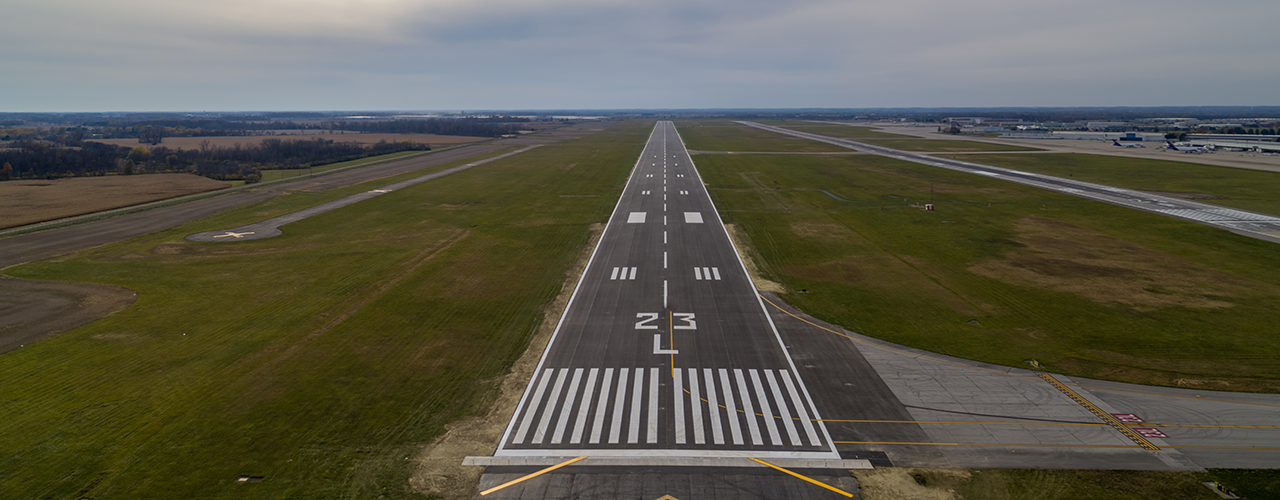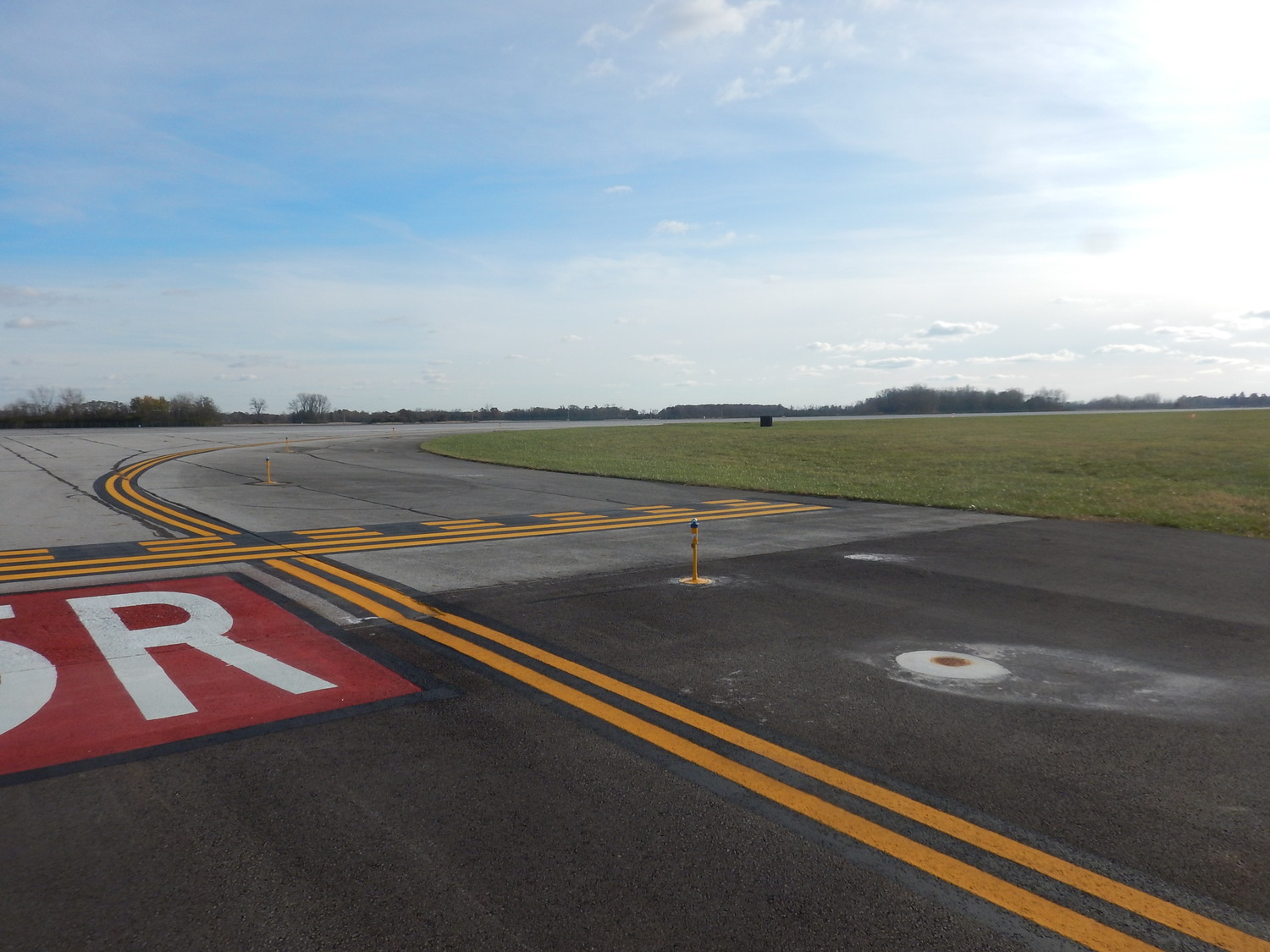LCK Runway 5R-23L Rehabilitation

Background
Due to historical military use, Rickenbacker International Airport (LCK) movement areas were not compliant with current critical aircraft designs such as the Boeing 747-8. CRAA initiated Boeing 747-8F operations in 2013, which necessitated multiple modifications to standards requests that were approved by the Federal Aviation Administration. Although these modifications to standards were approved by the FAA, they were temporary until the airport could permanently fix and ensure the airport was compliant with the Boeing 747-8F aircraft criteria.
This project addressed the modifications to standards associated with runway 5R-23L by complying with Aircraft Design Group VI standards and completing pavement rehabilitation of the existing runway, which had deteriorated. Woolpert was made aware of this project through meetings with representatives of the CRAA along with airport authority board meetings. Woolpert completed modification of standards program improvements to the airfield relative to the pavement geometries, safety areas, and object-free areas for the 747-8F aircraft and ADG VI/Taxiway Design Group 5 requirements in addition to the pavement rehabilitation of the associated taxiways and runways.
Challenge
This project focused on the rehabilitation of Runway 5R-23L and the taxiway pavements. This rehabilitation was a critical component of the MOS program and the continued growth at LCK. Woolpert survey and mobile mapping crews were responsible for obtaining existing topographic features, including locations of existing runway and connector taxiway pavement, airfield lights and signs, and pavement marking locations. Woolpert also collected UAS imagery to evaluate the joint pattern for the runway to incorporate back into the design. All the data was compiled and shown in AutoCAD Civil3D.
Solution
Woolpert’s engineers were tasked with designing proposed grading for the project. Woolpert established the proposed profile and shoulder grading of Runway 5R-23L, incorporating the new raised threshold bars on each end of the runway. Grading was included to allow a smooth transition between Phase 2A and Phase 2B and accommodate challenges that could arise in the multiple bidding scenarios. Coordination for paving and grading between the base bid and five bid alternates allowed each to be awarded independently. The bidding options were very fluid due to available funding, cost for additives, and the needs of the airport. One challenge the design team had to address was that the runway was going to be broken into two bid packages at the midpoint. As a result, Woolpert had to work with the firm that was responsible for the other half of the runway and coordinate that the same standards were being used and that the grades would complement each other. Each option required its own level of coordination with disciplines and consultants due to the limitations of each option and the effects on each consultant’s work. In addition, the amount of material that could be reused in the project was limited. Ultimately, the use of onsite material kept costs down and allowed for more work to be performed in Phase 2A.

Outcome
Upon the completion of this project, Woolpert successfully constructed runway 5R-24L in compliance with ADG VI standards. The Woolpert team was able to maintain the schedule for the client and deliver submittals on time. The close coordination with the other subconsultant firms allowed the project to be delivered economically for the airport and maximize the funding received.
Client
Columbus Regional Airport Association (CRAA)
Location
Columbus, OH
Services
- Topographic survey
- Engineering design
- UAS imagery
- Bid administration
- Subconsultant coordination
Benefits
- Woolpert remedied the airport deficiencies through modifications to standards.
- LCK has a fully refurbished runway capable of serving as a backup to the primary runway for critical cargo flights.